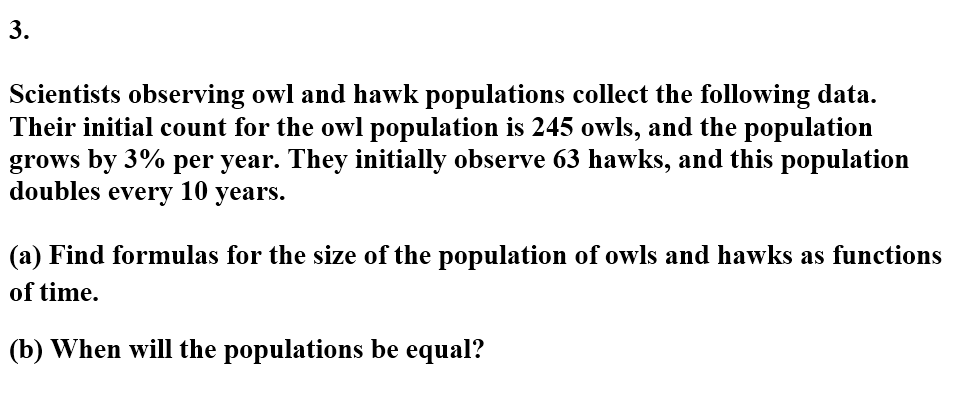How should I start this problem?

I know that you use #P*(1+r/n)^(kt)# formula and set them equal to each other?
I know that you use
1 Answer
About 34.82 years.
Explanation:
There are many different models for handling the growth of a population. If the model dictates that the population grows by a fixed percentage of the population each year, this is known as an exponential growth pattern and has a formula of this form:
In this formula,
In your first case, we have 245 owls initially, and we are told that each year adds 3% of the population in growth. We've been given specifically the two constants right in the problem:
Why does
In the second case, we are still given the initial population (
With the population known to be 126 at
To find when they are at equal populations, set the equations equal to each other and solve for
This is not an "easy" equation to solve for
It will be about 34.82 years for equal populations.
